Nagatoro is a small town in Chichibu, about two hours northwest of Tokyo by train. It’s known for the Arakawa River (荒川), with its white-water rapids and beautiful spring/autumn foliage on the trees which line its banks.
Over a weekend in late November, we paid a visit in order to try and capture some of the autumnal colours.
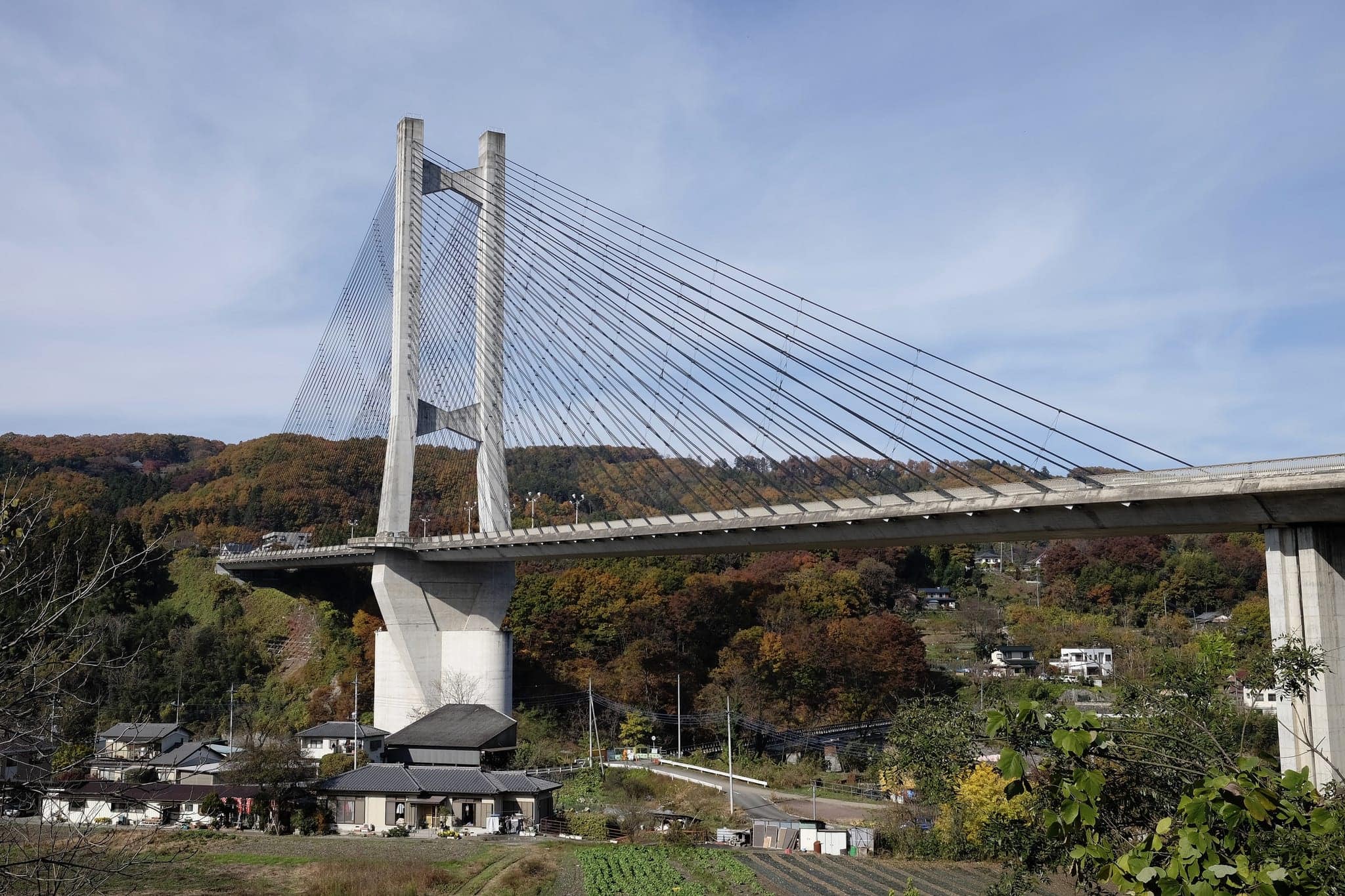
Getting off at Seibu Chichibu Station (西武秩父駅) we hired bicycles at the tourist information office directly outside the station exit (¥500/4 hours or ¥1000/8hours).

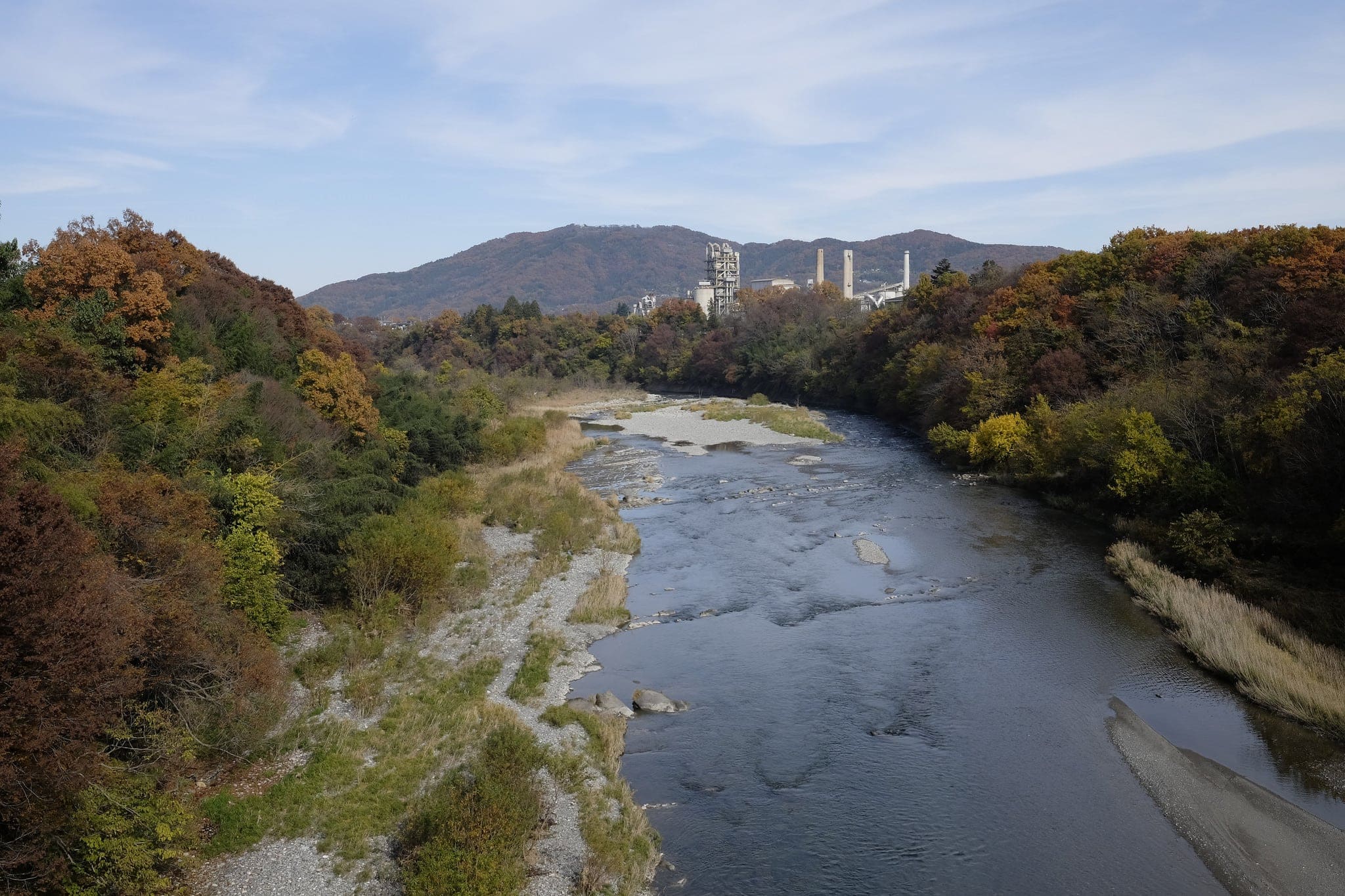
Wanting to avoid the main road, we cycled down to the river and then followed along the south bank, heading north.

Passing a cement factory, we came across a pair of trees standing alone in a desolate car park. I loved the contrast of the bright yellow leaves against the grey industrial backdrop.

After about two hours of pedalling, we reached Nagatoro Station and stopped for lunch at a soba restaurant (生そば むらた). The grilled yams and vegetable tempura were delicious.

Having returned the bicycles at the station, we walked downhill to the river. Nagatorotamayodo Prefectural Natural Park (県立長瀞玉淀自然公園) covers the 6 km long valley and is designated a place of scenic beauty.
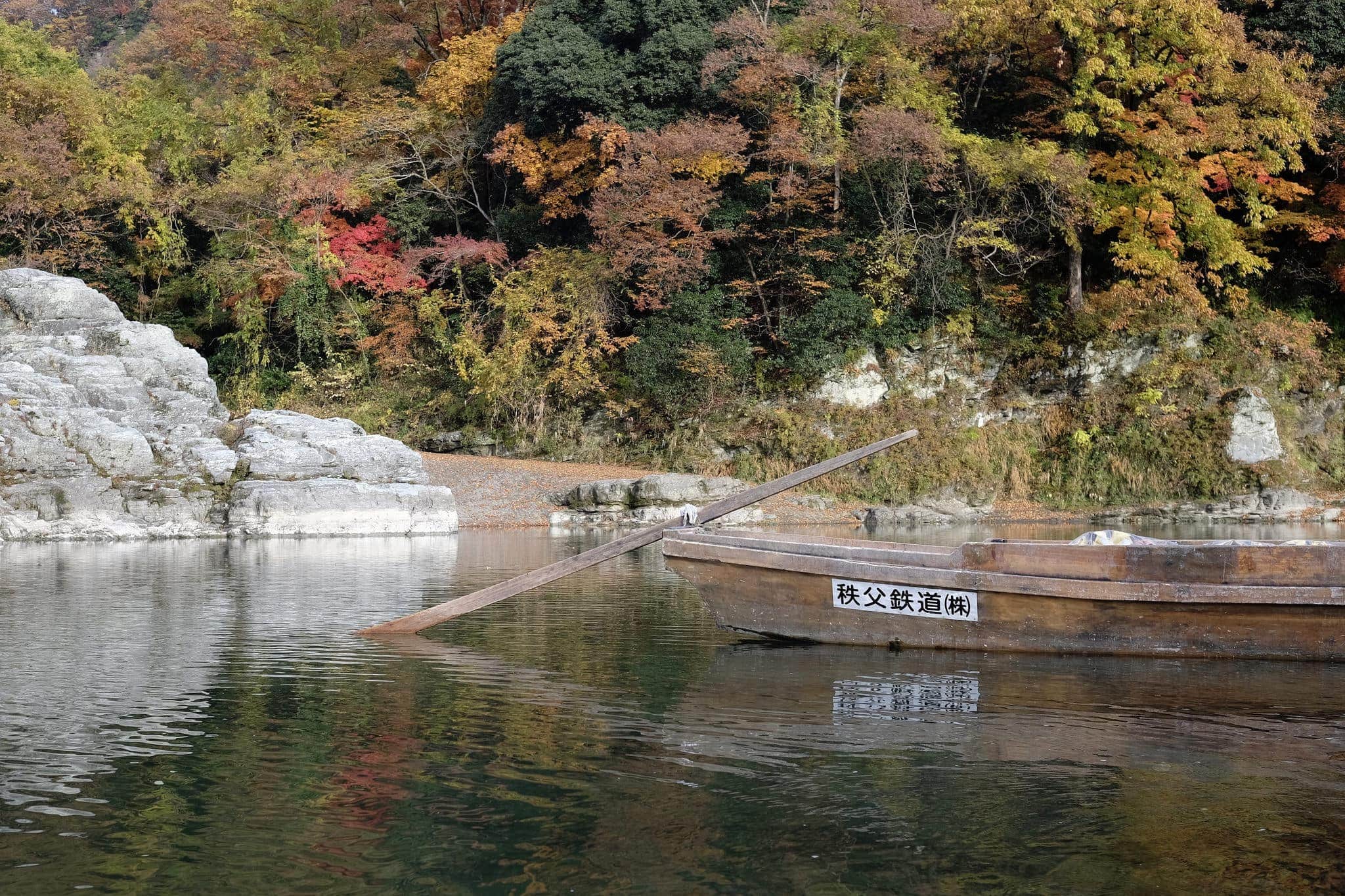
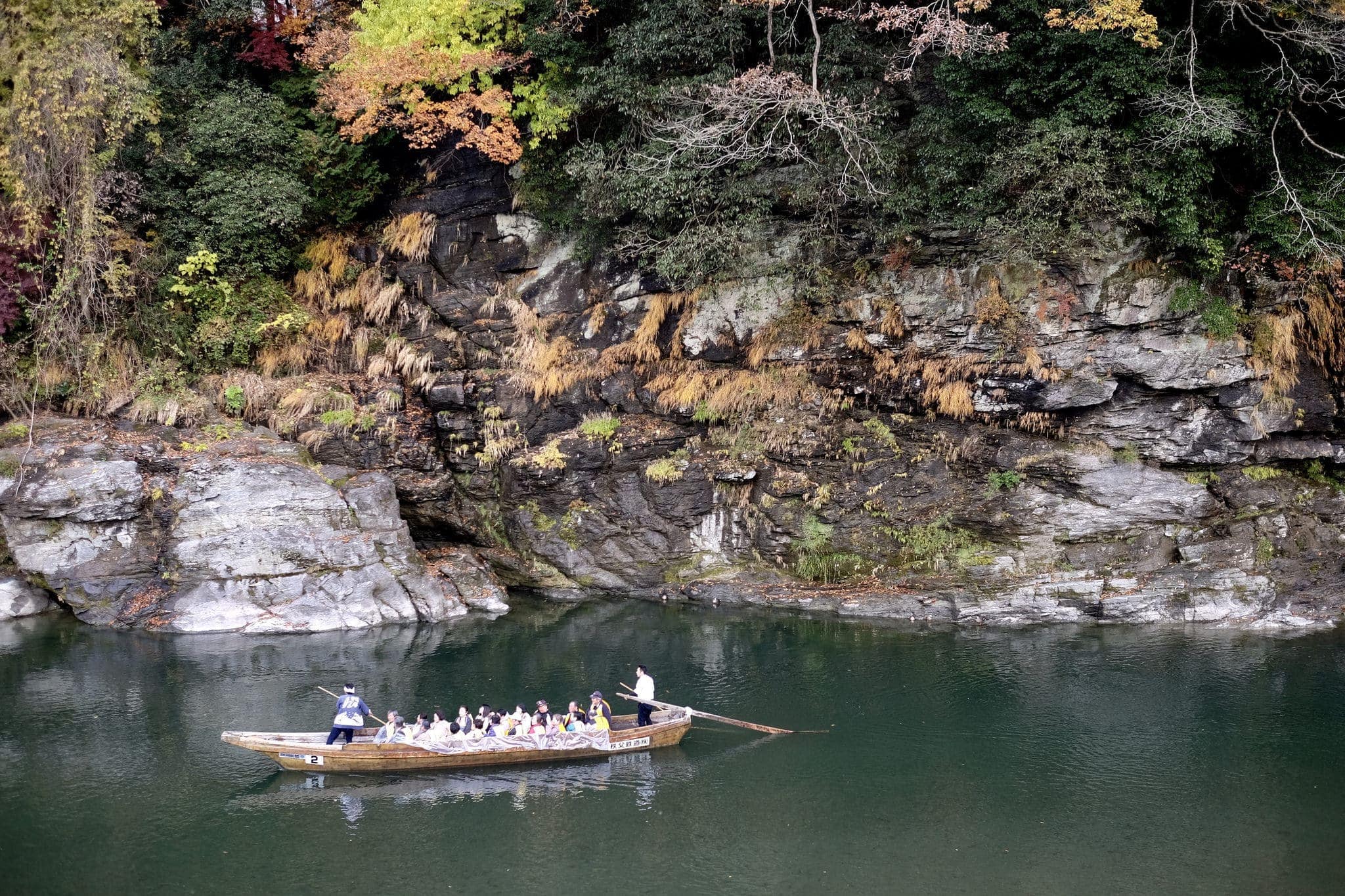
The stretch of the valley is named Iwadatami because the rocks look like successive layers of tatami mats overlapping each other.
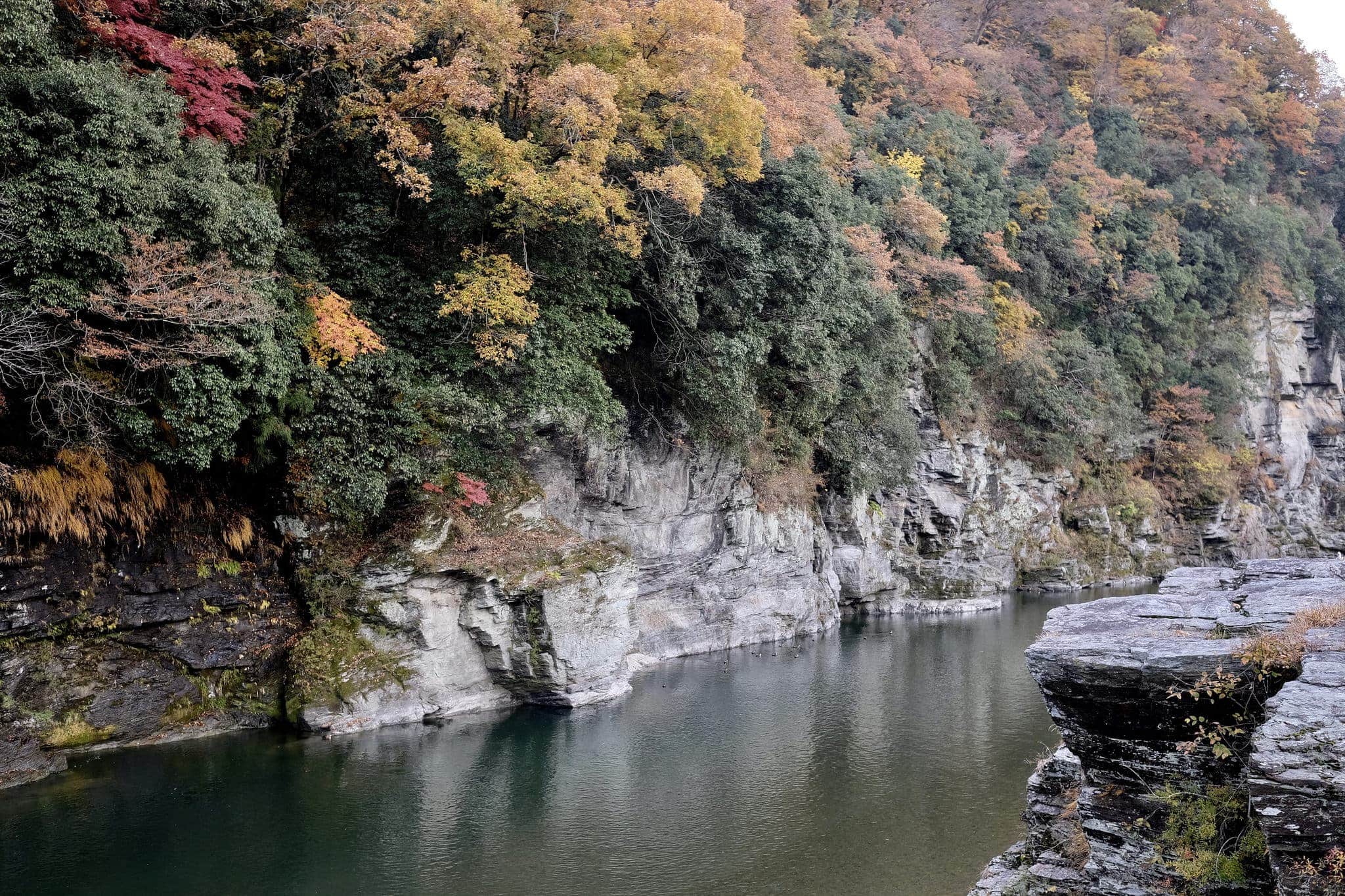
The riverside was busy with tourists taking photos against the red cliffs, whose name is derived from a decisive battle fought at the end of the Han dynasty in China.
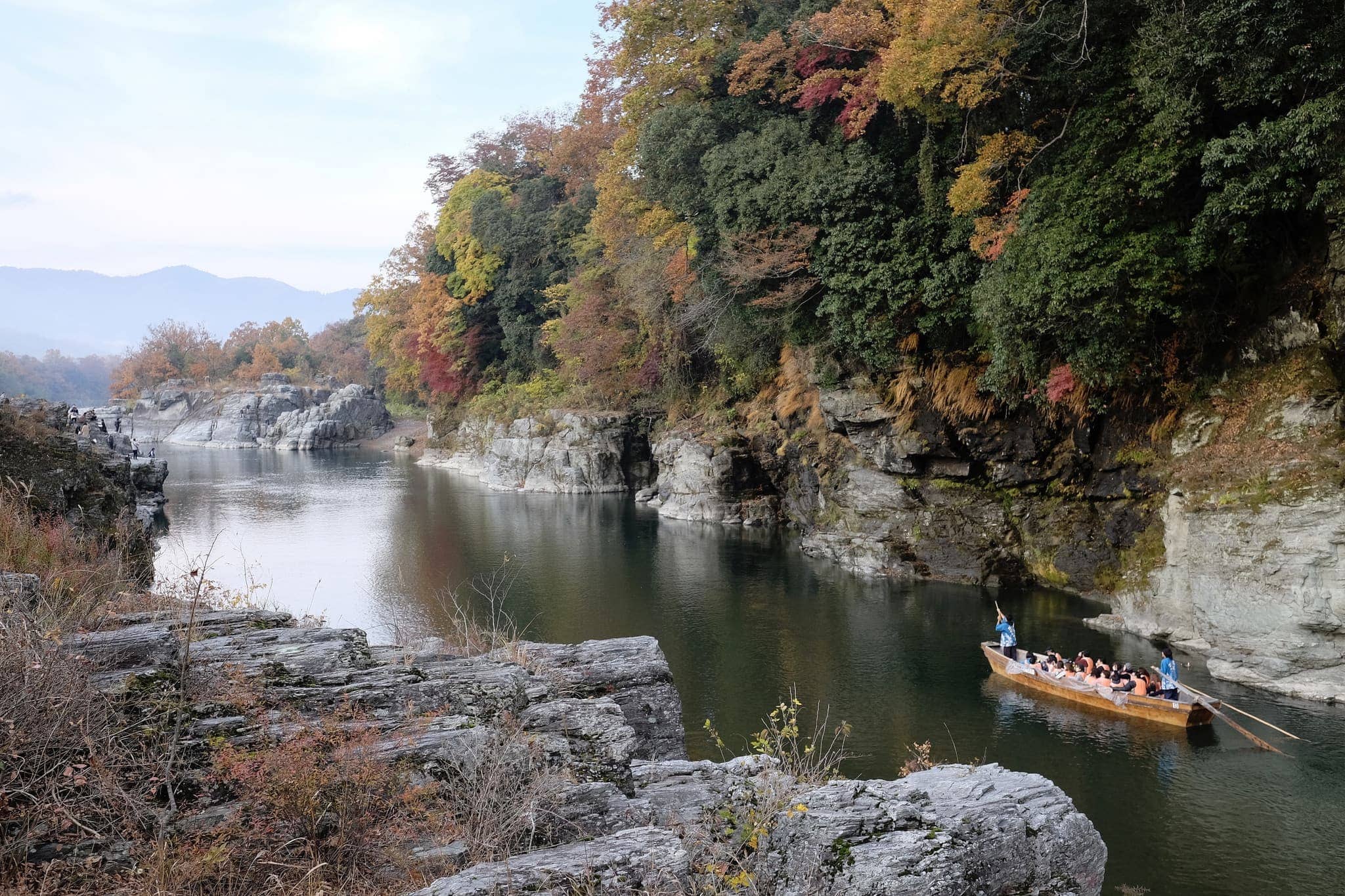
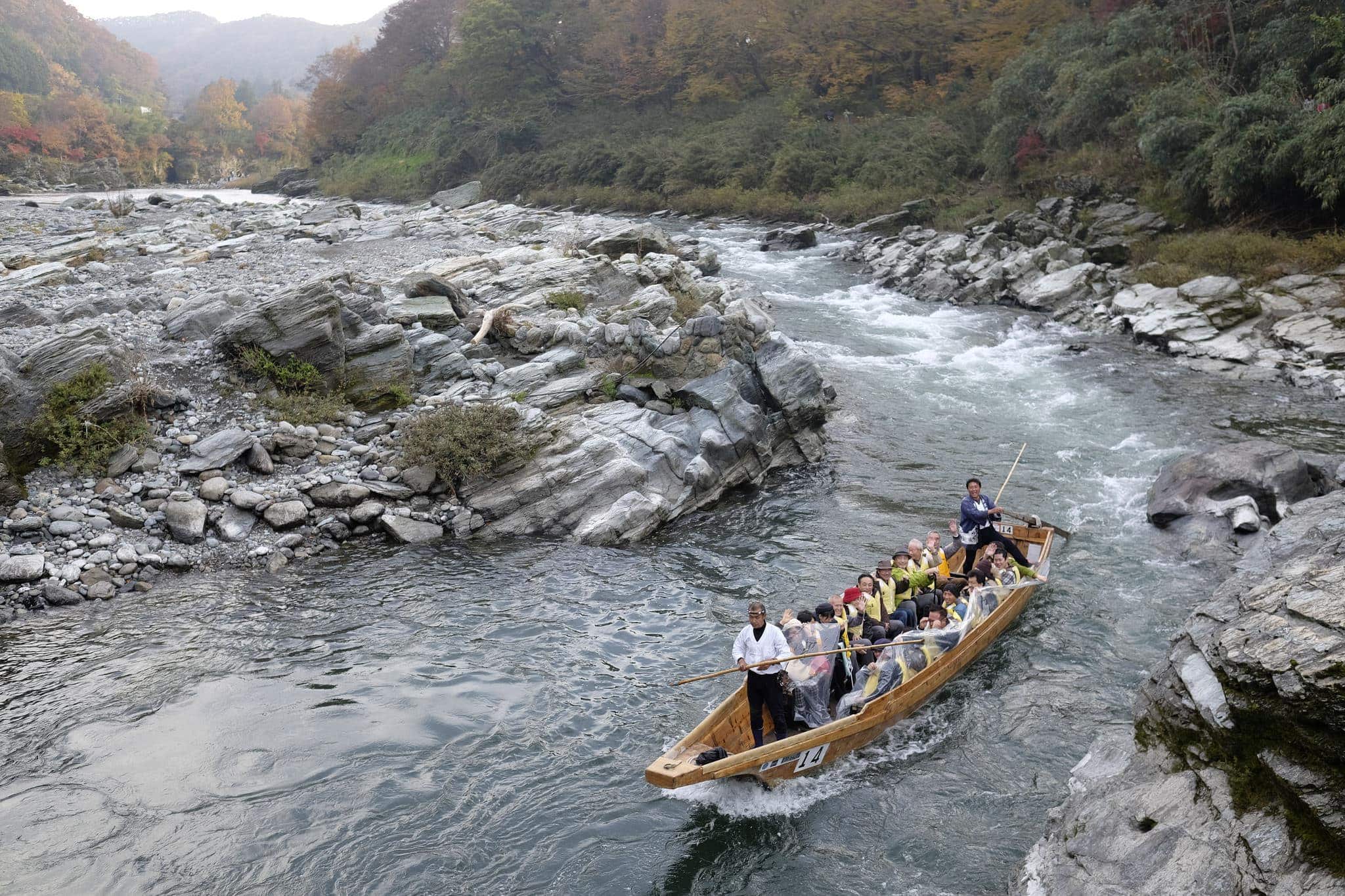
Boat tours can be taken along the river, with two people required to navigate the wooden vessels safely through the rapids.
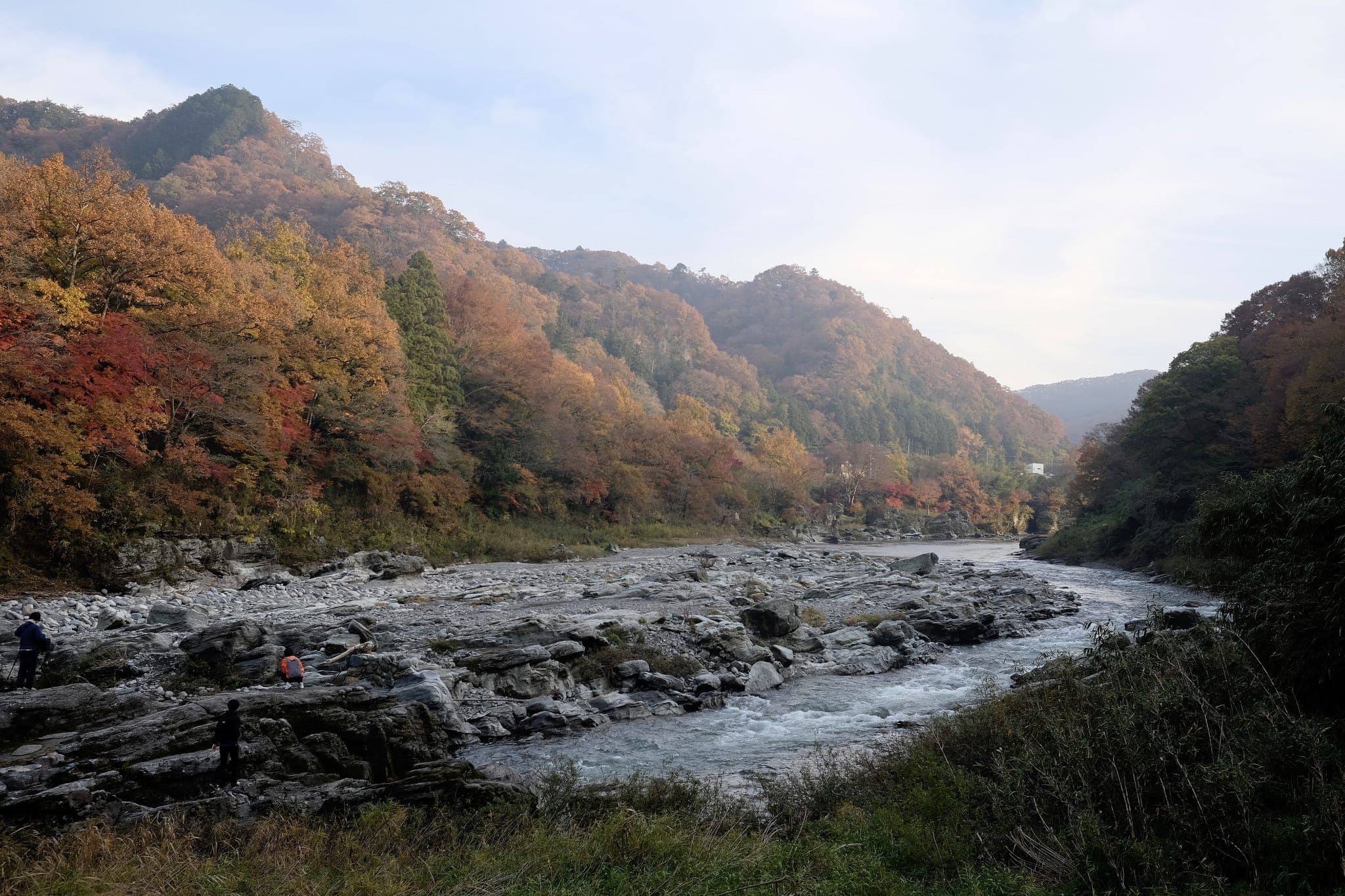
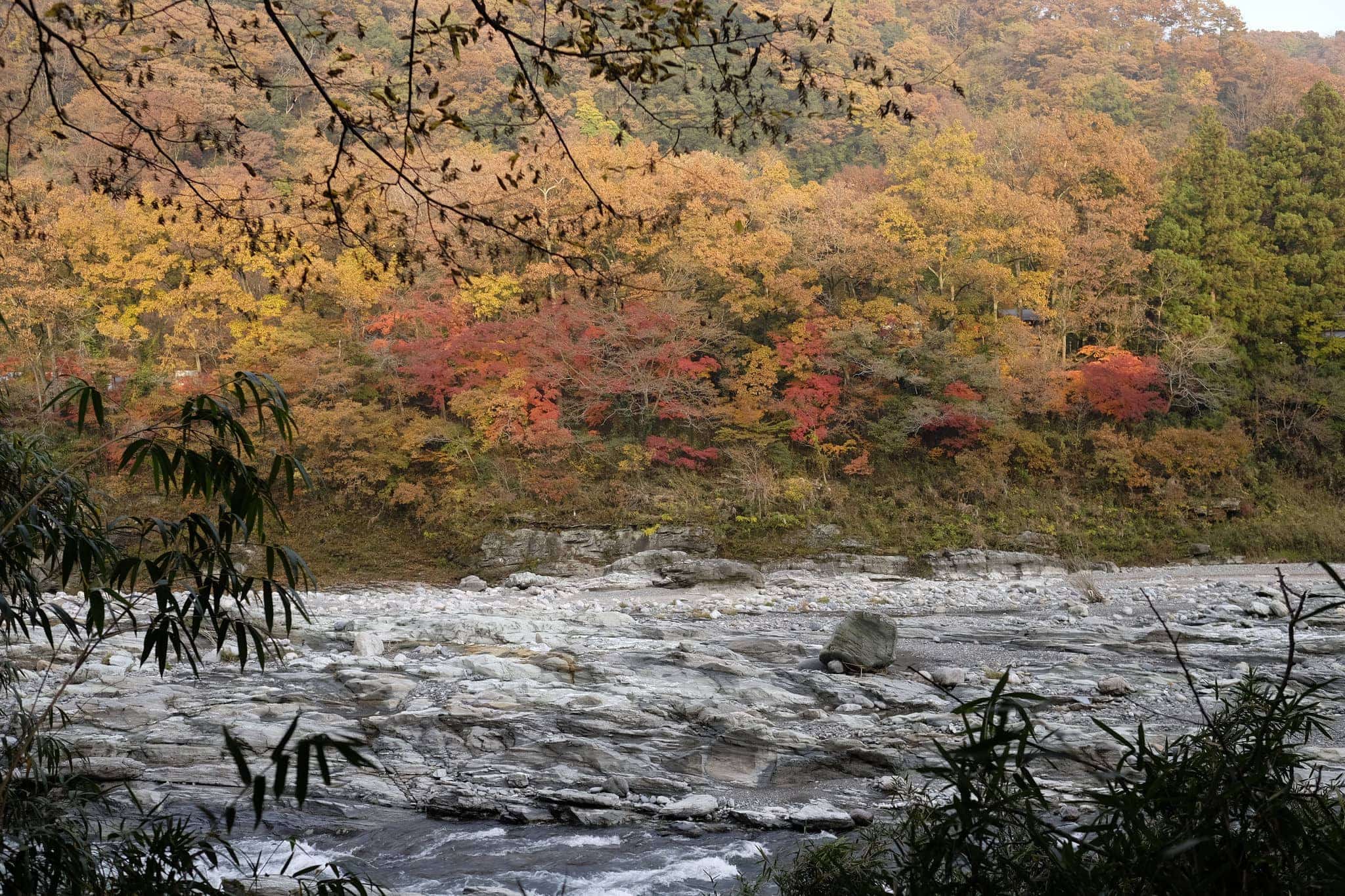
Walking south along the rocky shore, the dappled orange and red autumn colours shimmered in the fading light of golden hour.
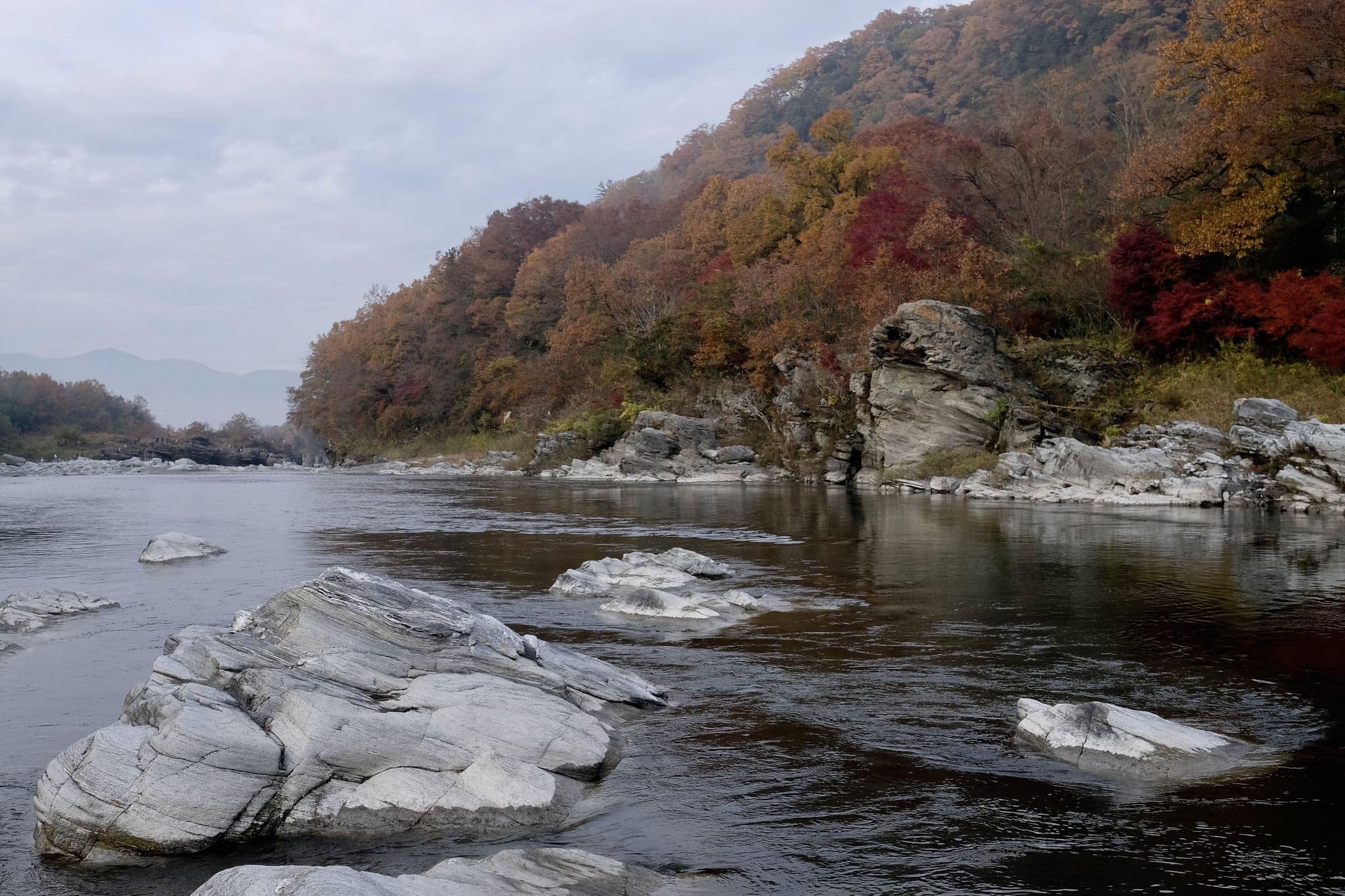
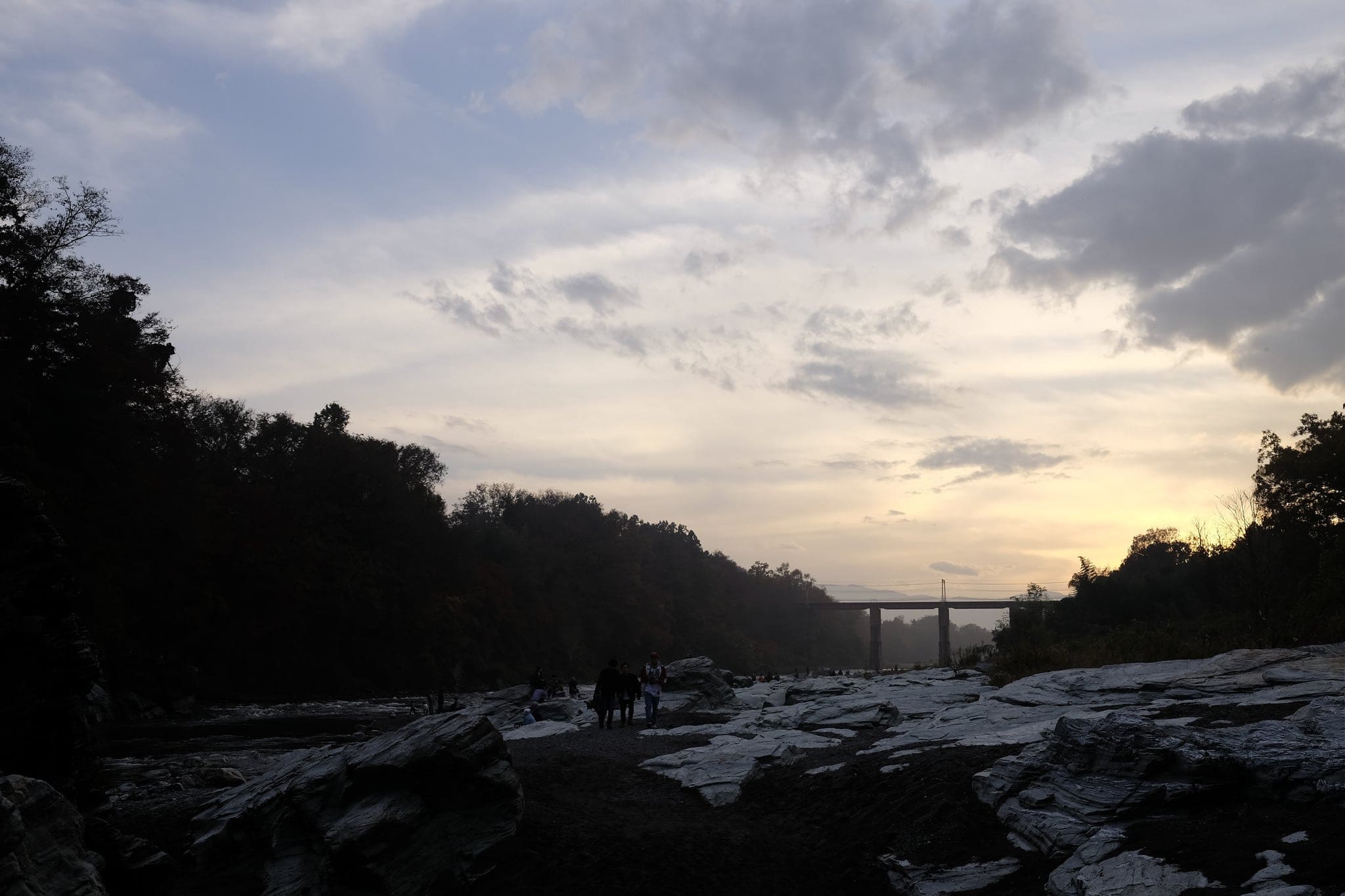
We finished our walk at Moon Stone Maple Park (月の石もみじ公園) where the trees are lit up every evening during November. From here its a short walk to Kami-Nagatoro Station (上長瀞駅) and then back to Tokyo.

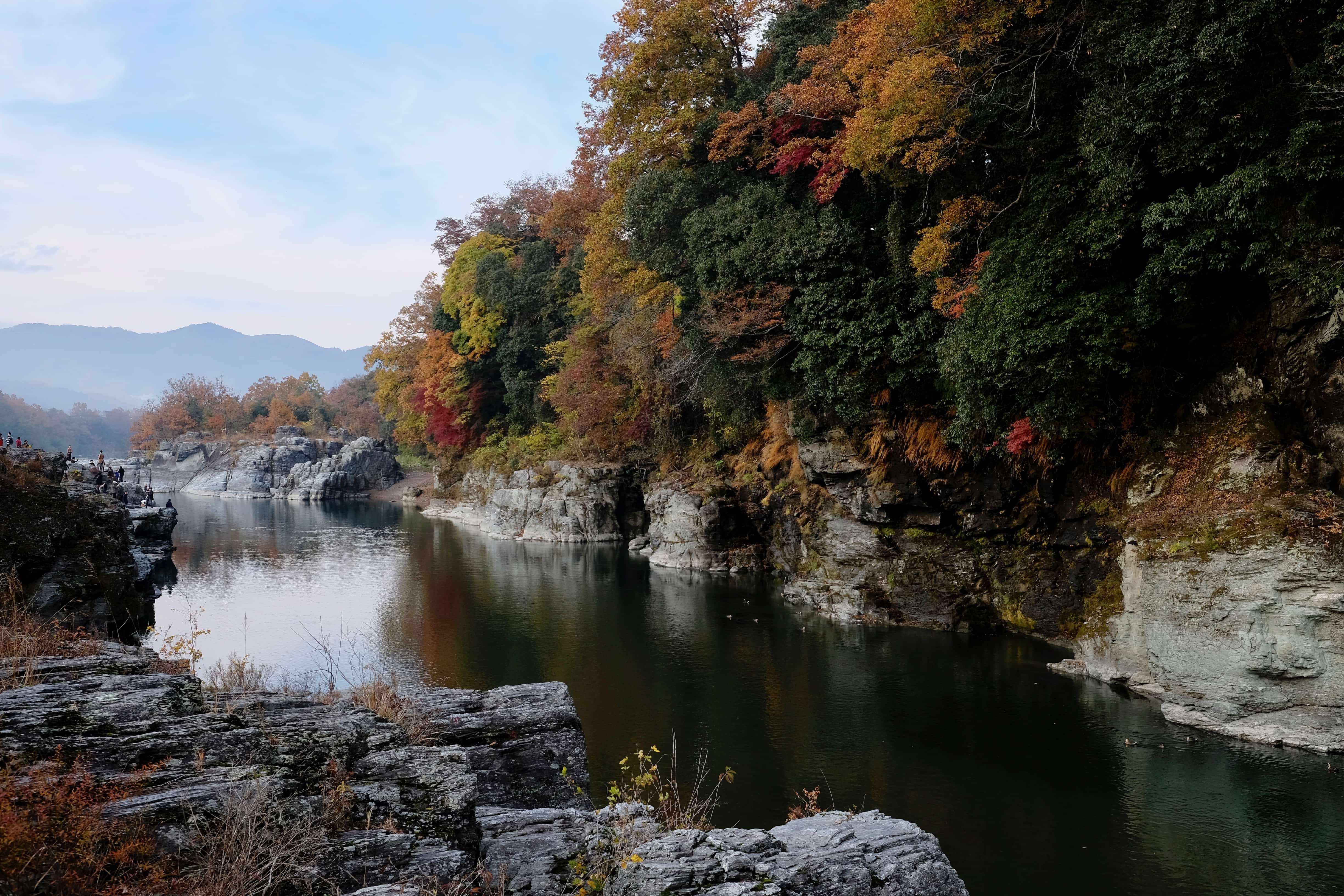
Reply